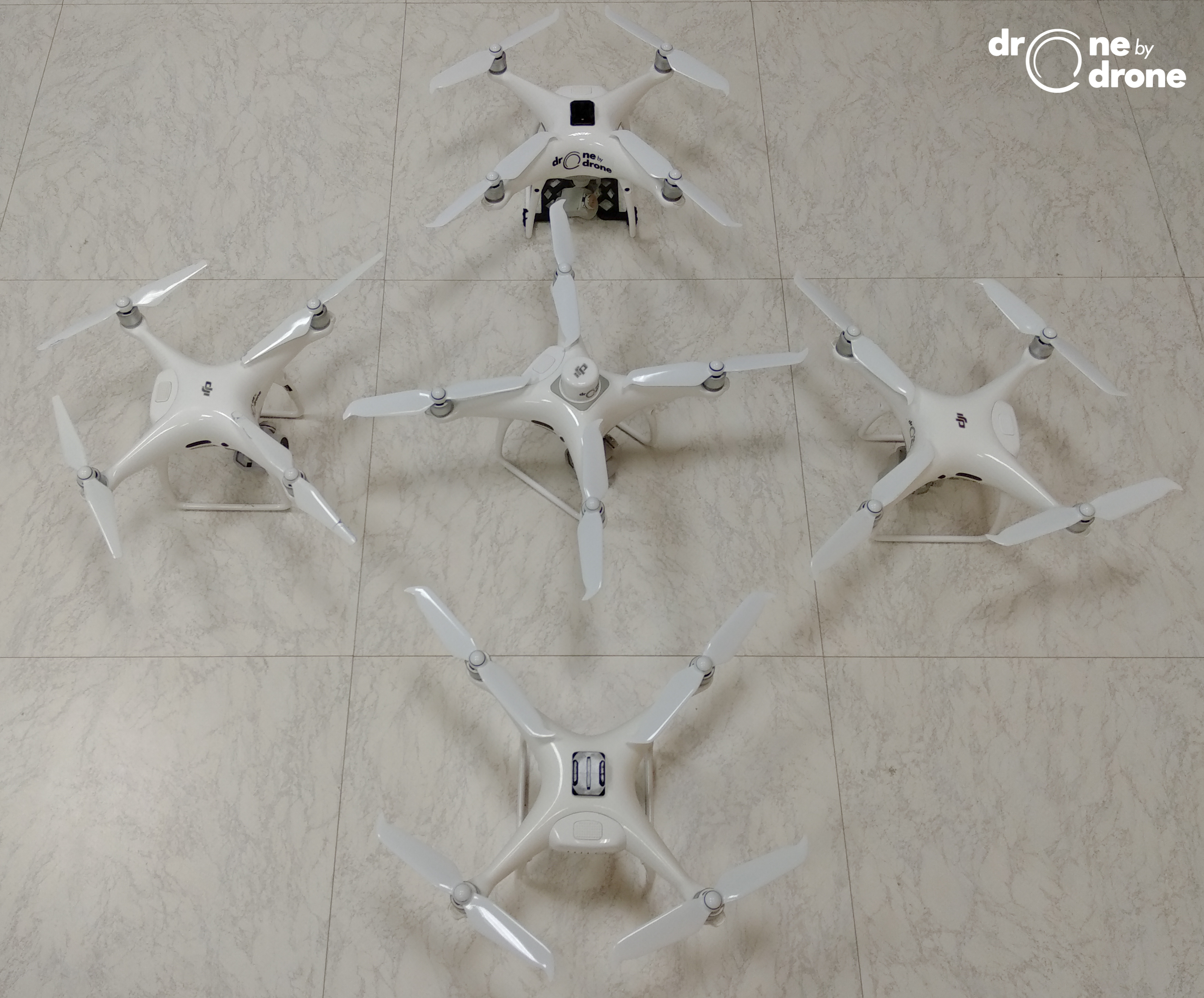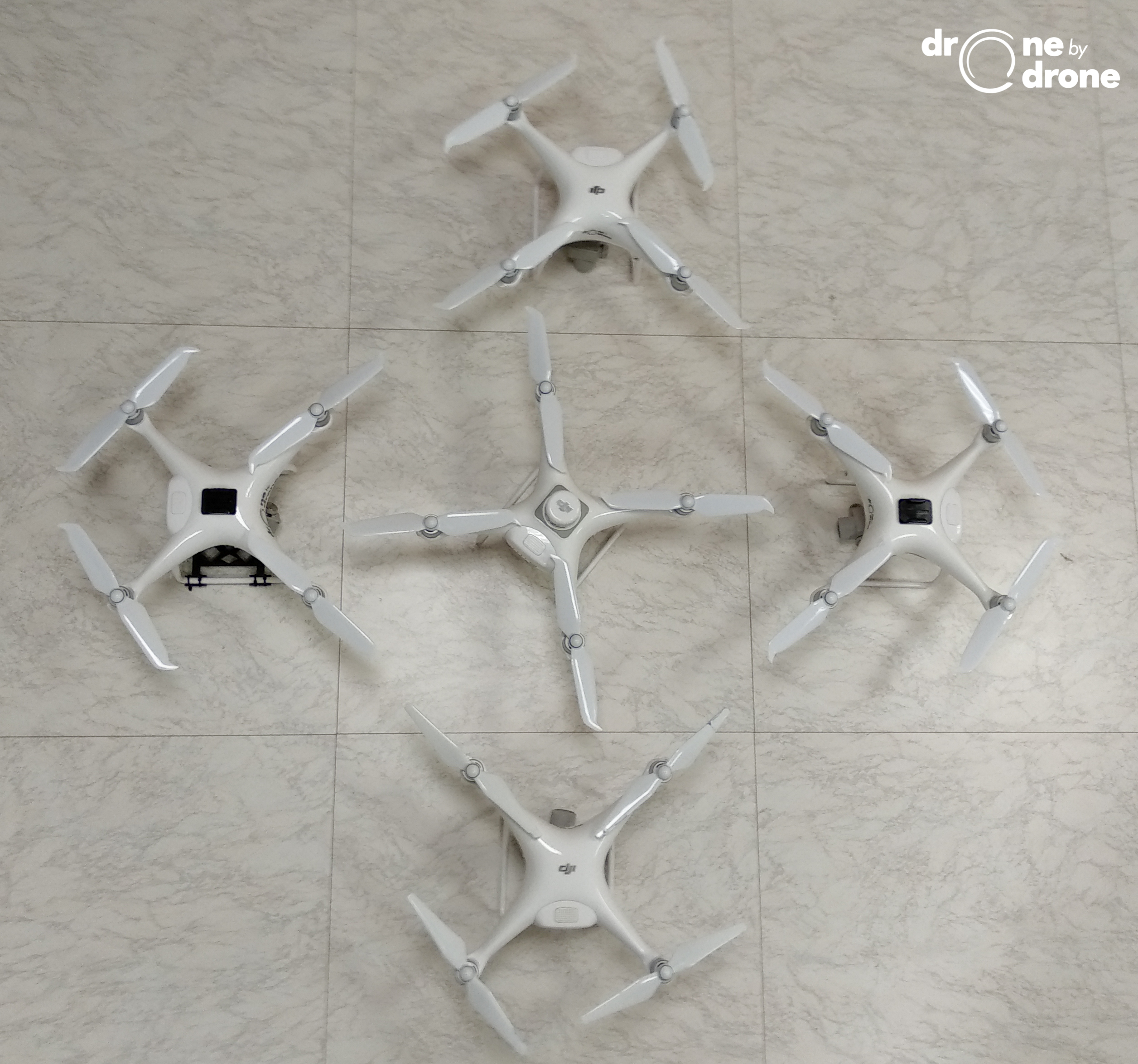Drone by Drone as an AESA-enabled RPAS operating company, operates a varied fleet of remotely piloted aircraft, both of the multicopter type and the plane or fixed wing type.
Among all the aircraft available to the operator in Bizkaia, the family of the Phantom 4 range of the Chinese manufacturer DJI stands out above the rest. With the permission of the two DJI Inspire 1 units that operate Drone by Drone and which also constitute the spearhead of specialized air operations, albeit on a more 'technical' level, the Phantom range drones support most of the weight of operations.
Since its launch on the market, the Phantom range has evolved technically, while maintaining its main virtues, such as its robustness and flexibility of use. Although it is not as portable a drone as its smaller brothers in the Mavic family, the DJI Phantom 4 has become a quality standard and professional first access drone. Equipped with a camera with a one-inch sensor, it becomes an ideal tool for the most common modest audiovisual recordings, mainly for web use of recorded material. In addition, it has the possibility of providing it with a certain load capacity by installing a small cargo bay, or by installing additional sensors in its upper part, without penalizing the flight and its performance.
For photogrammetry tasks it is an ideal tool, thanks to the mechanical shutter it has, and it even supports the installation of a multispectral camera (the Parrot Sequoia for example) for precision agriculture work.
In addition to the Pro model, Drone by Drone also operates its RTK (P4R) variant to carry out precise aerial surveying work, being able to carry out photogrammetric surveys with centrimetric precision, thanks to its direct connection with the IGN Topographic Network or the use of its RTK base.
We do not have its Multispectral version (P4M), considering it a tool too focused for agricultural use, with limitations for use in other applications.
With the entry into force of the EU Delegated Regulation 2019/945, we hope that this valuable tool will be replaced by the new adaptation in its Phantom 5 version, which includes substantial improvements, but maintains the same philosophy and can be used as a workhorse by our part. To do this, DJI must obtain the CE marking label that corresponds to its weight range (presumably C2) and with the electronic systems and equipment of its class according to European regulations.
Rumors (not yet confirmed) speak of the incorporation of a camera for audiovisual use with interchangeable lenses, and even the possibility of the landing gear being retractable to give it greater freedom of camera movements.
If that same aerial platform could have the possibility of mounting different cameras, for different uses, and that were interchangeable (thermographic, with zoom or even dual), it would become a standard of use for all types of applications, with the added possibility that it might have RTK positioning. Without a doubt, a bet on an irreplaceable tool.
Long live the Phantom!



